Advertising
How Do I Find Seo Agencies

- Importance of customer feedback
- Benefits of hiring a professional SEO agency
Looking for SEO firms? Learn how to find the perfect match for your requirements.
- Define your goals, research industry-specific agencies, and ask for recommendations.
- Read reviews, evaluate online presence, and request case studies.
- Schedule consultations, inquire about strategies, and consider your budget.
We’ll guide you through the process with informative, concise, and keyword-focused advice.
Get ready to master the art of finding SEO agencies that can take your online presence to the next level.
Key Takeaways
- Set realistic SEO goals and align them with business objectives and competition
- Research industry-specific SEO agencies and assess their portfolios, track record, and client testimonials
- Seek recommendations from trusted sources and assess the agency’s online presence and reputation
- Compare expertise, pricing options, and communication transparency of shortlisted agencies to find the best fit for SEO needs and budget
Define Your SEO Goals
How can we clearly define our SEO goals?

Setting realistic expectations and identifying our target audience are essential steps in defining our SEO goals. It’s crucial to understand that SEO isn’t a magic solution that will instantly boost our website’s ranking. We need to set achievable goals that align with our business objectives and take into account the competitive landscape in our industry.
By identifying our target audience, we can tailor our SEO efforts to reach the right people with the right content. This will help us attract qualified traffic and increase our chances of converting them into customers.
Once we’ve defined our SEO goals, we can move on to the next step of researching industry-specific SEO agencies that can help us achieve those goals.
Research Industry-Specific SEO Agencies
After clearly defining our SEO goals, we can now delve into researching industry-specific SEO agencies that can help us achieve these objectives. When it comes to SEO agency selection, finding top SEO agencies that specialize in our specific industry is crucial. Here are four important steps to consider:

- Identify your industry: Determine the specific industry or niche in which your business operates. This will help you narrow down your search for SEO agencies that have experience and expertise in your field.
- Research agency portfolios: Look for case studies and examples of previous work from potential agencies to assess their track record in your industry. This will give you an idea of their capabilities and the results they’ve achieved for similar businesses.
- Read client testimonials: Take the time to read reviews and testimonials from past clients. This will provide insights into the agency’s professionalism, communication skills, and ability to deliver results.
- Consider industry-specific strategies: Find out if the agency has a deep understanding of industry-specific SEO strategies and tactics. This will ensure that they can tailor their approach to your unique needs and challenges.
Ask for Recommendations From Trusted Sources
When looking for SEO agencies, it’s essential to ask for recommendations from trusted sources. Online reviews and ratings can provide valuable insights into the performance and credibility of different agencies.
Additionally, attending industry networking events can be a great way to connect with professionals who’ve firsthand experience working with SEO agencies and can provide trustworthy recommendations.
Online Reviews and Ratings
By consulting online reviews and ratings from trusted sources, we can easily identify reliable SEO agencies. The importance of online reputation can’t be overstated in today’s digital landscape. Customer reviews have a powerful impact on the perception and credibility of a business.
When searching for SEO agencies, it’s crucial to consider the following:
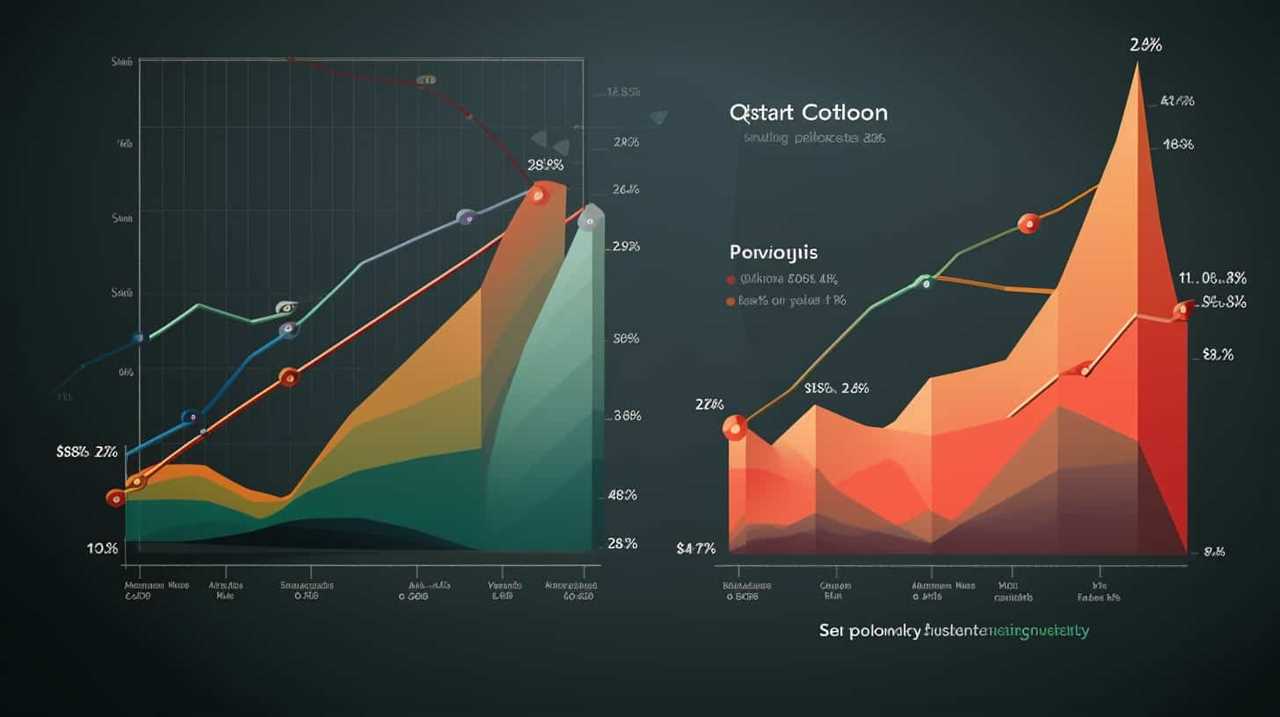
- Look for agencies with a high average rating and positive feedback from multiple clients.
- Pay attention to specific results and success stories mentioned in the reviews.
- Check if the agency responds to feedback and addresses any concerns or issues raised by customers.
- Consider the overall sentiment and tone of the reviews to gauge the agency’s professionalism and customer satisfaction.
By carefully analyzing online reviews and ratings, we can make informed decisions and choose SEO agencies that have a proven track record of delivering excellent results.
Transitioning into the next section, industry networking events can also be a valuable resource for finding reputable SEO agencies.
Industry Networking Events
Continuing from our exploration of online reviews and ratings, let’s now delve into the effectiveness of industry networking events in finding SEO agencies.
Attending industry networking events can be one of the most effective strategies for building connections and finding reputable SEO agencies. These events provide an opportunity to meet professionals in the field, engage in discussions, and seek recommendations from trusted sources.
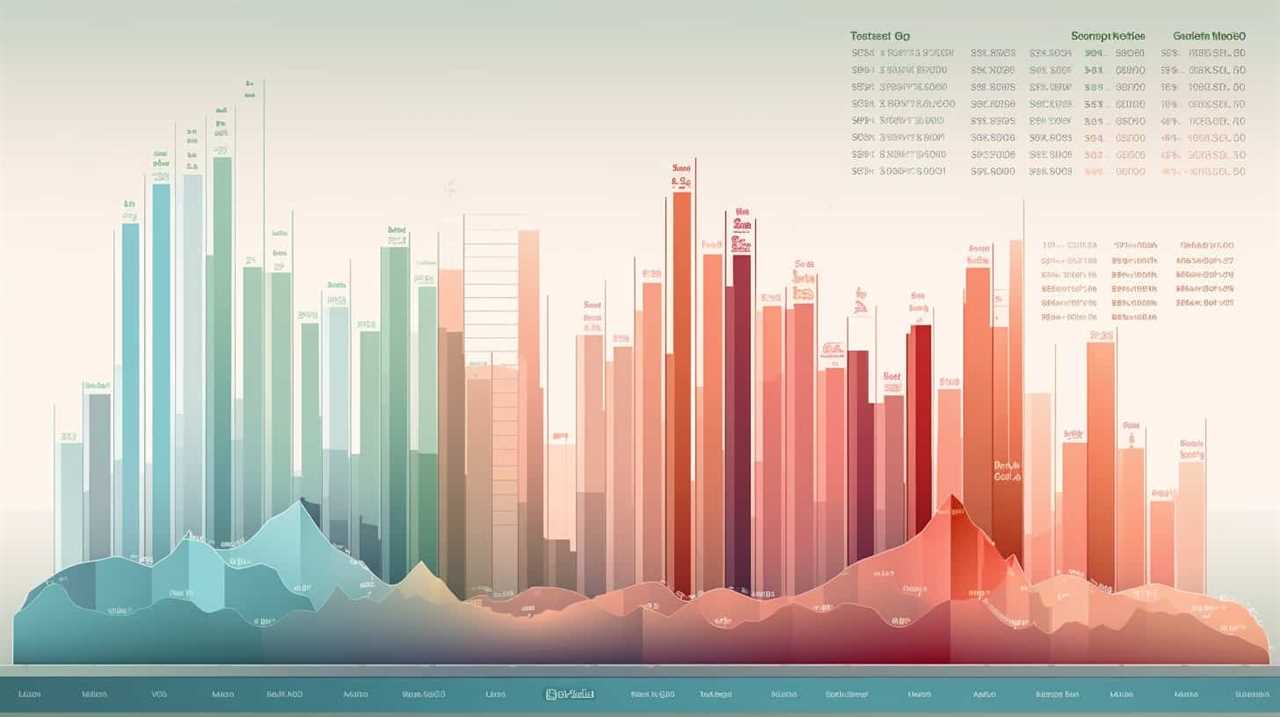
By actively participating in these events, you can gain insights into the latest trends, exchange ideas, and establish relationships with industry experts. Don’t hesitate to ask for recommendations from those who’ve already worked with SEO agencies. Their firsthand experiences can provide valuable insights and help you make informed decisions.
Once you have gathered recommendations from networking events, the next step is to read online reviews and testimonials to further evaluate the potential SEO agencies.
Read Online Reviews and Testimonials
To gather information about SEO agencies, we can start by checking out online reviews and testimonials. Here are four reasons why this is an important step in the search for the right agency:
- Importance of customer feedback:
Online reviews and testimonials provide valuable insights into the experiences of past clients. By reading these, we can get a sense of the agency’s track record and the quality of their services. - Credibility and reputation:
Positive reviews and testimonials indicate that the agency has a good reputation and is trusted by its clients. This can give us confidence in their ability to deliver results. - Transparency and honesty:
Reviews and testimonials often reveal the agency’s communication style, level of transparency, and overall professionalism. This information is crucial in determining if the agency aligns with our goals and values. - Evaluation of results:
Reviews and testimonials can shed light on the agency’s ability to generate measurable results. By reading about the success stories of past clients, we can gauge the agency’s effectiveness and assess if they can help us achieve our SEO goals.
Evaluate Agency’s Website and Online Presence
After reading online reviews and testimonials, we can further evaluate an SEO agency by assessing their website and online presence.
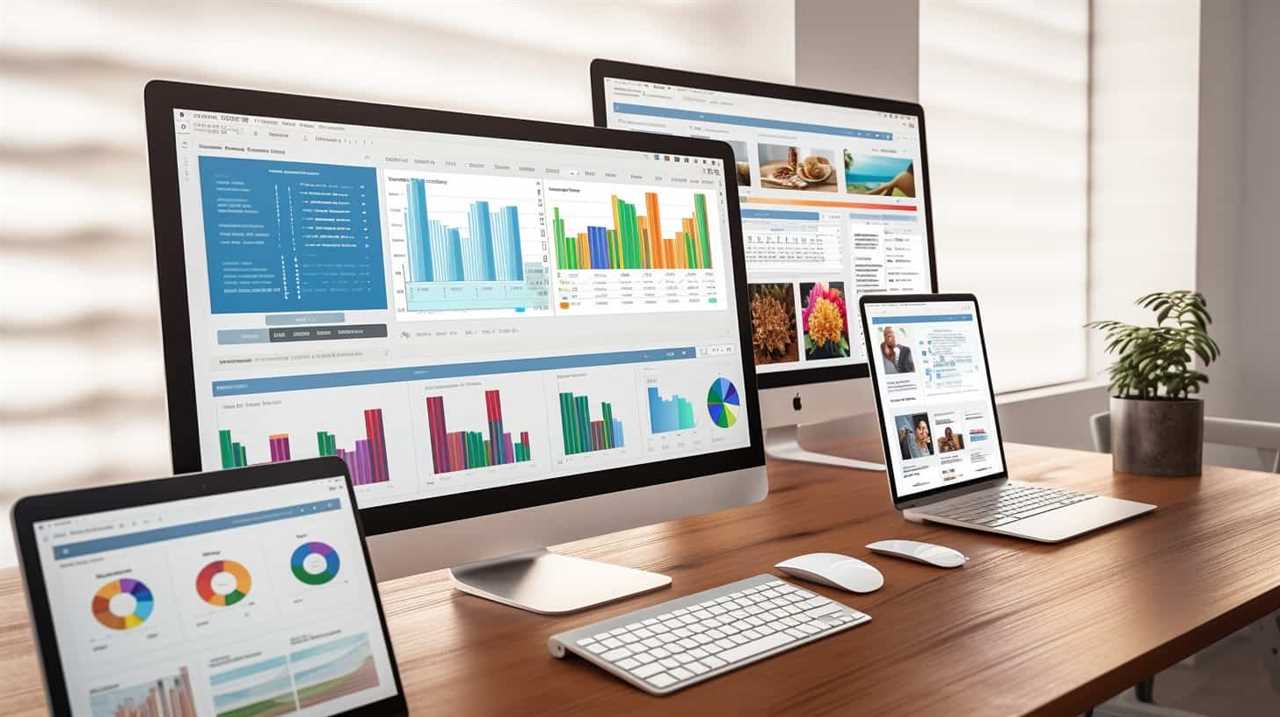
One important aspect to consider is the agency’s portfolio. By looking at the work they’ve done for previous clients, we can gain insight into their capabilities and the results they’ve achieved.
It’s also essential to check the agency’s social media presence. A strong and active social media presence indicates that the agency is up-to-date with the latest trends and is actively engaged in the industry. Additionally, it allows us to see how they interact with their audience and whether they provide valuable content.
Evaluating an agency’s website and online presence provides valuable information that can help us determine their expertise and suitability for our SEO needs.
Request Case Studies and Previous Client Results
We can further assess the expertise and track record of an SEO agency by requesting case studies and examining previous client results. This step is crucial in selecting the right agency for your needs.

Here are four reasons why case studies and previous client results are important:
- Demonstrates success: By reviewing case studies, you can see how the agency has helped other clients achieve their SEO goals. It gives you an idea of the agency’s capabilities and whether they align with your objectives.
- Measures agency’s success: Previous client results provide tangible evidence of an agency’s ability to deliver results. Look for improvements in search engine rankings, organic traffic, and conversions to gauge their effectiveness.
- Identifies expertise: Case studies reveal the agency’s areas of specialization. Pay attention to industries and niches they’ve worked with to determine if they’ve experience in your specific field.
- Validates credibility: Positive client results and testimonials validate the agency’s credibility and reputation. It gives you confidence that they can deliver on their promises.
Schedule Consultations With Shortlisted Agencies
Now that you have shortlisted a few SEO agencies, it’s time to schedule consultations with them.
During these consultations, compare the expertise of each agency and assess their pricing options.
This will help you determine which agency is the best fit for your SEO needs and budget.

Compare Agency Expertise
To effectively compare agency expertise, we must reach out to the shortlisted agencies and schedule consultations with them. Here are four key steps to follow when comparing agency expertise:
- Prepare a list of questions: Before the consultation, make a list of questions that will help you assess the agency’s expertise. Ask about their experience in your industry, their approach to SEO, and the results they’ve achieved for their clients.
- Review case studies and testimonials: Take the time to review the agency’s case studies and client testimonials. This will give you insights into their past work and the results they’ve delivered.
- Evaluate their knowledge: During the consultation, pay attention to how well the agency understands your business and SEO challenges. A knowledgeable agency will ask insightful questions and provide valuable recommendations.
- Assess their communication and transparency: Effective communication is crucial for a successful partnership. Evaluate how well the agency communicates and whether they’re transparent about their strategies, progress, and results.
By following these steps, you can compare agency expertise and select the best agency for your SEO needs.
Now, let’s move on to the next step and assess pricing options.
Assess Pricing Options
Once you have shortlisted SEO agencies, it’s important to schedule consultations with them in order to assess their pricing options. During these consultations, you can discuss your specific needs and goals, and the agencies can provide you with a detailed breakdown of their pricing structure.
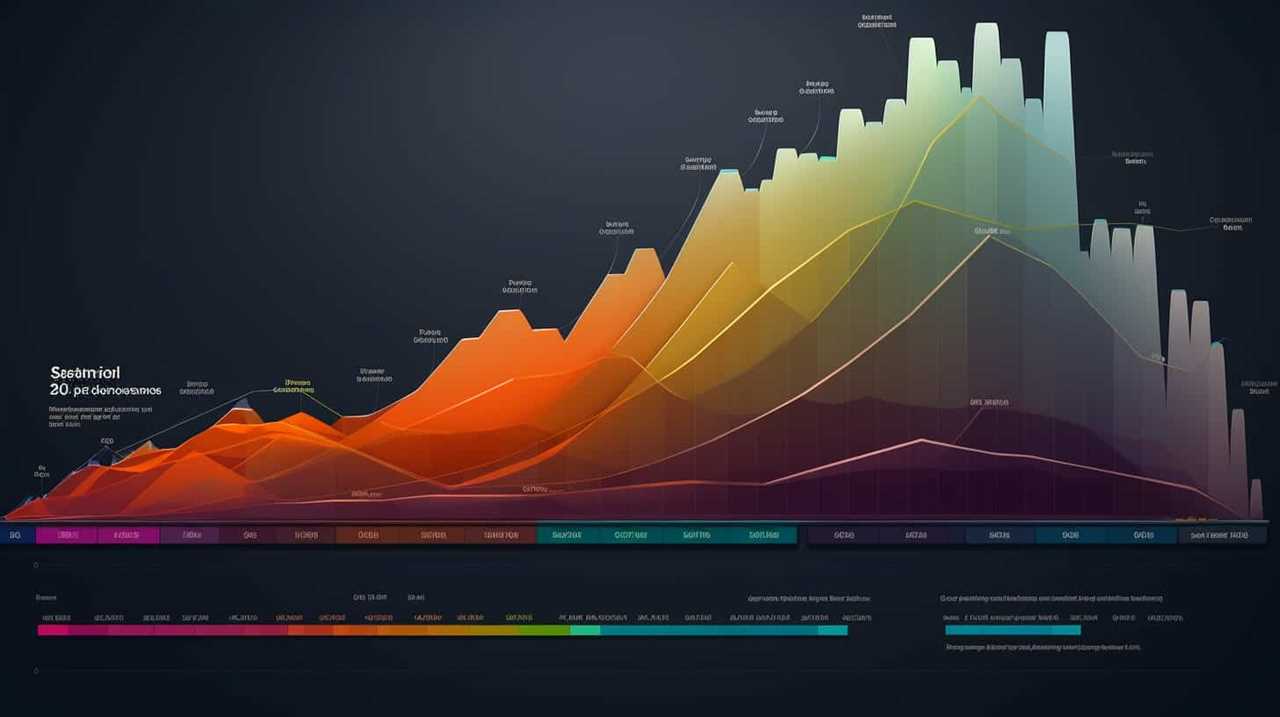
It’s crucial to assess pricing options to ensure that it aligns with your budget and expectations. Additionally, take this opportunity to ask about any additional fees or costs that may arise during the course of the SEO campaign.
Remember to inquire about how the agencies assess competitors and measure ROI, as these factors are essential for evaluating the effectiveness of their strategies.
Inquire About Agency’s SEO Strategies and Techniques
When searching for SEO agencies, we should inquire about the strategies and techniques they employ. This is important because understanding their approach will give us insights into their expertise and ability to drive results.
Here are four key aspects to consider when evaluating an agency’s SEO strategies and techniques:

- Success Stories: Inquire about the agency’s past success stories. Ask them how they’ve helped clients improve their rankings and achieve their SEO goals. This will give you an idea of their track record and their ability to deliver results.
- Client Rankings: Evaluate the agency’s past clients’ rankings. Request information on the keywords they targeted and how they were able to improve their clients’ visibility in search engine results. This will allow you to assess their effectiveness in optimizing websites for search engines.
- White Hat Techniques: Ensure that the agency follows ethical and sustainable SEO practices. Ask them about their approach to link building, content creation, and on-page optimization. A reputable agency will prioritize long-term success and avoid any black hat techniques that could harm your website’s reputation.
- Customized Strategies: Inquire about how the agency tailors their strategies to meet the unique needs of each client. Effective SEO requires a customized approach that takes into account factors such as industry, target audience, and competition. A good agency will have a clear understanding of your business and develop a strategy that aligns with your goals.
Consider Budget and Pricing Options
Now let’s delve into our next consideration when searching for SEO agencies – evaluating the budget and pricing options available.
When it comes to choosing an SEO agency, it’s crucial to consider your budget and the pricing options offered by different agencies. Consider payment options such as monthly retainers, hourly rates, or project-based pricing. It’s important to find a pricing structure that aligns with your budget and business goals.
Additionally, evaluating the potential return on investment (ROI) is essential. Look for agencies that can provide case studies or examples of their past success in generating ROI for their clients. By considering both budget and ROI potential, you can make an informed decision and choose an SEO agency that provides the best value for your investment.
Frequently Asked Questions
How Long Does It Typically Take to See Results From SEO Efforts?
Typically, it takes time to see results from SEO efforts. The SEO timeline varies depending on factors such as website age, competition, and optimization strategies. Measuring SEO success requires analyzing metrics like organic traffic and keyword rankings.

What Is the Difference Between White Hat and Black Hat SEO Techniques?
When it comes to SEO techniques, the difference between white hat and black hat lies in ethical practices and adherence to SEO guidelines. White hat focuses on quality content and organic strategies, while black hat resorts to manipulative tactics.
Can an SEO Agency Guarantee a Specific Ranking on Search Engine Results Pages?
Yes, an SEO agency can provide guarantees on search engine rankings, but it is important to understand that these guarantees are often based on their expertise, strategies, and the SEO agency pricing. Hiring an SEO agency offers numerous advantages.
How Often Should SEO Strategies Be Reviewed and Updated?
Frequency of SEO strategy updates is crucial for staying competitive. Regular SEO performance audits ensure optimal results. It’s important to review and update strategies periodically to adapt to changing algorithms and market trends.
What Metrics Should I Track to Measure the Success of My SEO Campaign?
To measure the success of our SEO campaign, we track organic traffic growth and keyword ranking improvements. These metrics provide valuable insights into the effectiveness of our strategies and help us optimize our efforts.

Conclusion
In conclusion, finding the right SEO agency requires careful consideration and research. By defining your goals, researching industry-specific agencies, and asking for recommendations, you can gather a list of potential agencies to consider.
Next, it’s important to read reviews and evaluate the websites of these agencies. This will give you an idea of their reputation and the quality of their work. Additionally, requesting case studies from the agencies will allow you to see examples of their past successes and determine if their strategies align with your needs.
When evaluating potential agencies, don’t forget to inquire about their SEO strategies and techniques. It’s important to ensure that their methods are ethical and align with industry best practices.
Lastly, consider your budget and pricing options. While it’s important to find an agency that fits within your budget, it’s also crucial to remember that quality services come at a price.

By following these steps, you can make an informed decision and find an SEO agency that will help you achieve your online goals. So, why wait? Start your search today!
Advertising
How Do I Pass an Seo Interview

The famous quote ‘knowledge is power’ is widely recognized. This rings especially true when it comes to excelling in an SEO interview.
We know you’re eager to liberate yourself from the anxiety of job hunting and impress potential employers with your SEO expertise. That’s why we’re here to share essential concepts, effective strategies, and expert tips to help you nail that interview and secure your dream SEO job.
Let’s dive in and unleash your SEO potential!
Key Takeaways
- Understanding SEO best practices, core components, and the importance of SEO tools and analytics
- Advanced keyword analysis, understanding keyword intent, and targeting high-potential keywords
- Content creation, conducting SEO audits, and optimizing factors like page load speed and mobile-friendliness
- Mastering technical SEO by focusing on website architecture, site visibility, and mobile optimization
Essential SEO Concepts
In this section, we’ll explore the fundamental principles and core components of SEO. Understanding SEO best practices is essential for achieving success in digital marketing.

SEO tools and analytics play a crucial role in optimizing our website’s performance and improving our online visibility. By utilizing these tools, we can analyze important data such as keyword rankings, website traffic, and user behavior. This valuable information allows us to make data-driven decisions and continuously improve our SEO strategies.
Implementing SEO best practices and leveraging SEO tools and analytics is key to staying ahead in the competitive online landscape.
Now that we’ve covered the essential concepts of SEO, let’s dive into the next section, which will focus on effective keyword research strategies.
Effective Keyword Research Strategies
Now let’s explore effective keyword research strategies to further enhance our SEO efforts and drive targeted organic traffic to our website.

One of the key strategies is advanced keyword analysis. This involves going beyond basic keyword research and delving deeper into understanding the intent behind the keywords. By analyzing search volume, competition, and relevance, we can identify high-potential keywords that will bring in the most relevant traffic.
Additionally, long tail keyword targeting is another powerful strategy. Long tail keywords are longer and more specific phrases that have less competition and higher conversion rates. By targeting these niche keywords, we can attract highly qualified visitors who are more likely to convert into customers.
On-Page Optimization Techniques
To continue our discussion on effective SEO strategies, let’s dive into the realm of on-page optimization techniques.
On-page optimization plays a crucial role in improving a website’s visibility and ranking in search engine results pages (SERPs). One key aspect of on-page optimization is content creation. By creating high-quality, relevant, and engaging content, you can attract more organic traffic and keep visitors on your site longer.

Additionally, conducting an SEO audit is essential to identify areas for improvement on your website. This includes analyzing factors such as page load speed, mobile-friendliness, URL structure, and metadata.
Mastering Technical SEO
Continuing our exploration of effective SEO strategies, let’s delve into the realm of mastering technical SEO with a focus on optimizing website performance and structure.
A well-designed website architecture is crucial for search engines to understand and crawl your site effectively. It involves organizing your website’s pages, URLs, and navigation in a logical and user-friendly manner. This can improve your site’s visibility and accessibility, ultimately boosting its search rankings.
Additionally, mobile optimization is essential in today’s digital landscape, as more and more users access the internet through their smartphones. Ensuring that your website is responsive and mobile-friendly won’t only enhance the user experience but also align with search engines’ preferences, leading to higher rankings.

Nailing SEO Interview Questions
Let’s tackle SEO interview questions head-on to ensure we nail them with confidence and expertise.
When preparing for an SEO interview, it’s important to have a solid understanding of the industry and its best practices. One of the most common SEO interview mistakes isn’t being well-prepared. To avoid this, you should familiarize yourself with the latest SEO trends, algorithms, and tools.
Additionally, it’s crucial to have a clear understanding of the core concepts of SEO, such as keyword research, on-page optimization, and link building.
To further enhance your chances of success, practice answering common SEO interview questions and have specific examples ready to demonstrate your skills and knowledge.
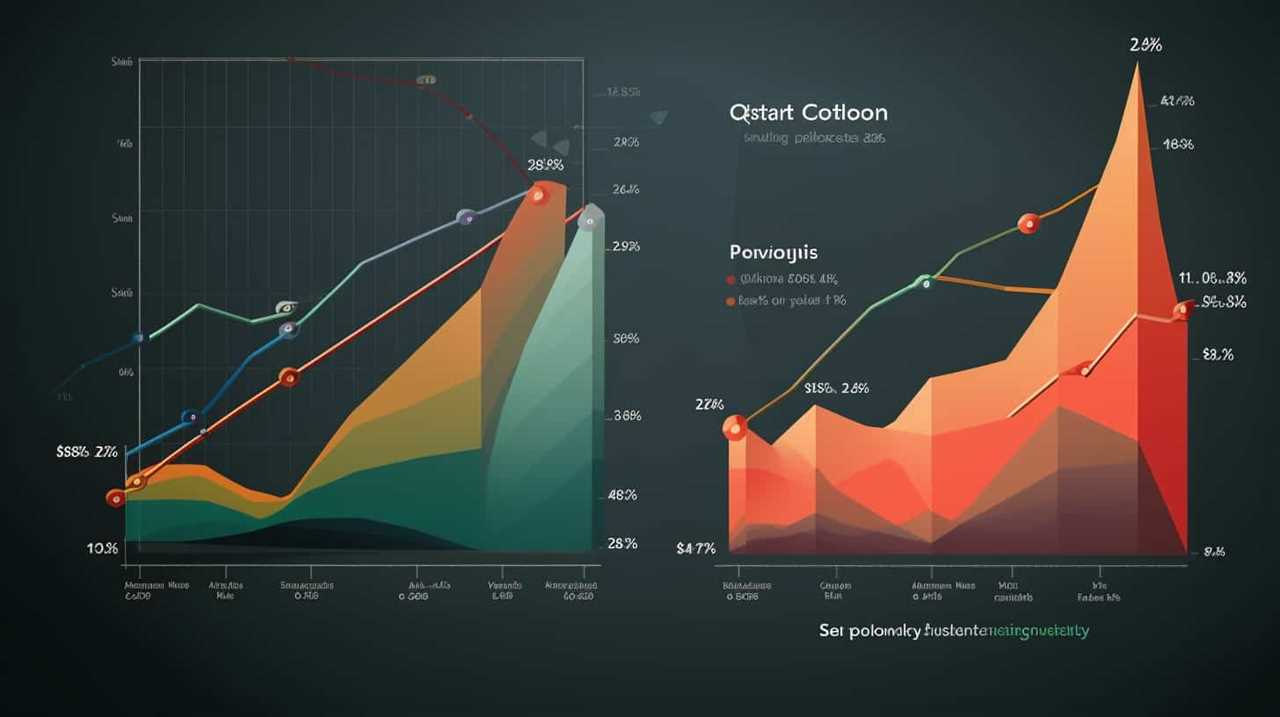
Frequently Asked Questions
What Are Some Common Challenges Faced in Implementing SEO Strategies and How Can They Be Overcome?
Implementing SEO strategies can be challenging due to technical issues and competition. However, we can overcome these obstacles by conducting thorough competitor analysis and addressing any technical issues promptly.
How Can Social Media Platforms Be Integrated Into an SEO Strategy?
Social media platforms can be integrated into an SEO strategy by leveraging social media engagement to drive traffic and improve search engine rankings. Content marketing strategies can be used to create and promote valuable content on social media platforms, boosting visibility and engagement.
What Are Some Effective Ways to Measure the Success of an SEO Campaign?
To measure the success of an SEO campaign, we track key performance indicators such as organic traffic, keyword rankings, and conversion rates. These metrics give us valuable insights into the effectiveness of our strategies.
Can You Provide Some Tips for Optimizing Websites for Voice Search?
When optimizing websites for voice search, key considerations include understanding natural language, using long-tail keywords, and optimizing for featured snippets. Voice search optimization strategies involve creating conversational content and improving site speed for a seamless user experience.

How Important Is Link Building in SEO and What Are Some Best Practices for Building High-Quality Backlinks?
Link building is a crucial aspect of SEO. It helps improve our website’s visibility and rankings. Anchor text plays a significant role in link building, and acquiring natural backlinks through quality content and outreach strategies is essential.
Conclusion
In conclusion, mastering the art of SEO is like navigating a vast ocean of information. By understanding essential concepts, conducting effective keyword research, implementing on-page optimization techniques, and mastering technical SEO, you can set sail toward success.
Just like a skilled sailor, your ability to navigate this ever-changing landscape will determine your success in an SEO interview. So, prepare yourself, equip your knowledge, and confidently set sail into the world of SEO.
Advertising
How Do I Get Free Seo Keywords

Are you tired of spending a significant amount of money on SEO keywords? Your search ends here! Discover the methods to acquire SEO keywords without any cost.
In this article, we’ll share the secrets to finding valuable keywords without breaking the bank. By utilizing tools like Google’s Keyword Planner and analyzing competitor keywords, you can optimize your website for search engines without spending a dime.
Get ready to unlock the power of free SEO keywords and set your website free!
Key Takeaways
- Importance of conducting keyword research and utilizing keyword research tools for website optimization
- Benefits of using long-tail keywords for free SEO optimization, including attracting a more relevant audience and improving search engine rankings
- The value of leveraging user-generated content for keyword research, such as maximizing social media engagement and analyzing customer reviews for keyword insights
- The strategic advantage of analyzing competitor keywords and incorporating competitor keyword insights into our SEO strategy, including using tools for competitive analysis and analyzing keyword gaps.
Understanding the Importance of SEO Keywords
Understanding the importance of SEO keywords involves identifying the most relevant and effective terms for optimizing website visibility and attracting organic traffic.

One crucial aspect of SEO optimization is understanding keyword density. Keyword density refers to the percentage of times a specific keyword appears on a web page compared to the total number of words. It’s essential to strike the right balance between using keywords enough to boost search engine rankings, but not so much that it appears unnatural or spammy.
Another factor that plays a significant role in boosting SEO rankings is the use of meta tags. Meta tags are snippets of HTML code that provide information about a web page’s content to search engines. They include title tags, meta descriptions, and meta keywords.
By optimizing these meta tags with relevant keywords, you can improve your website’s visibility and attract more organic traffic.
Understanding keyword density and utilizing meta tags effectively are key elements in achieving successful SEO optimization.

Utilizing Google’s Keyword Planner Tool
To further optimize website visibility and attract organic traffic, we can utilize Google’s Keyword Planner Tool. This tool is a powerful resource that enables us to conduct keyword research and find relevant keywords for our website.
By identifying the right keywords, we can improve our website’s ranking on search engine results pages and attract more visitors.
In addition to Google’s Keyword Planner Tool, there are other alternative keyword research tools available that can provide valuable insights. These tools can help us find keywords that might be overlooked by competitors, giving us a competitive edge.
Once we’ve identified our target keywords, it’s important to maximize keyword density in our website content. This means incorporating the keywords naturally and strategically throughout our website to increase its visibility and relevance to search engines.

Exploring Long-Tail Keywords for Free SEO Optimization
After utilizing Google’s Keyword Planner Tool, we can now delve into exploring long-tail keywords for free SEO optimization. Long-tail keywords are longer and more specific keyword phrases that are often less competitive but highly targeted. They can help you attract a more relevant audience and improve your search engine rankings.
When conducting keyword research, it’s important to consider the intent of your target audience. By understanding their needs and preferences, you can identify long-tail keywords that align with their search queries. Here’s a table highlighting some keyword research techniques and long-tail keyword strategies:
| Keyword Research Techniques | Long-Tail Keyword Strategies |
|---|---|
| Analyzing competitor keywords | Using question-based keywords |
| Exploring related searches | Incorporating location-specific keywords |
| Conducting customer surveys | Targeting niche-specific keywords |
Leveraging User-Generated Content for Keyword Research
We can further enhance our keyword research by leveraging user-generated content. One effective way to do this is by maximizing social media engagement for keyword discovery.
By actively engaging with our audience on social media platforms, we can gather valuable insights into the words and phrases they use when discussing our products or services.

Additionally, harnessing the power of customer reviews can provide us with valuable keyword insights. By analyzing the language used in these reviews, we can identify recurring keywords that are relevant to our business.
This user-generated content can give us a deeper understanding of how our target audience thinks and speaks about our offerings. By incorporating these insights into our keyword research, we can optimize our SEO strategy to better meet our audience’s needs.
Now, let’s dive into the next section about analyzing competitor keywords for free SEO insights.
Analyzing Competitor Keywords for Free SEO Insights
Continuing our exploration of keyword research, let’s now delve into the world of analyzing competitor keywords to gain valuable SEO insights. When it comes to optimizing our website for search engines, understanding what keywords our competitors are ranking for can provide us with a strategic advantage.

Here are four steps to help us analyze competitor keywords effectively:
- Identify top ranking competitor keywords: Start by identifying our main competitors in the industry and then analyze their websites to identify the keywords they’re ranking for.
- Use SEO keyword research tools for competitive analysis: Utilize tools like SEMrush or Ahrefs to gather data on our competitors’ keyword rankings, search volume, and competition level.
- Analyze keyword gaps: Compare our own keyword rankings to those of our competitors to identify any keyword gaps we can take advantage of.
- Study competitor content: Analyze our competitors’ content to understand how they’re using keywords effectively and incorporate those strategies into our own content.
Frequently Asked Questions
What Are Some Common Mistakes to Avoid When Conducting Keyword Research for SEO Optimization?
When conducting keyword research for SEO optimization, it’s important to avoid common mistakes. By using effective long tail keyword identification techniques, we can ensure accurate and targeted results that will boost our website’s visibility.
How Can I Identify the Most Effective Long-Tail Keywords for My Website?
To identify the most effective long-tail keywords for your website, consider best practices for using long tail keywords in content marketing. Additionally, track the performance of long tail keywords in SEO campaigns to optimize your strategy.
Are There Any Alternative Keyword Research Tools Besides Google’s Keyword Planner?
There are alternative keyword research tools besides Google’s Keyword Planner. We can explore the best practices for using them and optimize SEO keywords for voice search. Let’s liberate our SEO strategies!

How Can I Optimize User-Generated Content to Target Specific SEO Keywords?
To optimize user-generated content for targeting specific SEO keywords, we can follow a few steps. First, research and identify the keywords relevant to your content. Then, incorporate these keywords naturally into the user-generated content to enhance its SEO performance.
What Are Some Strategies for Staying Updated on Competitor Keywords in Order to Gain an Edge in Seo?
To gain an edge in SEO, we stay updated on competitor keywords through thorough competitor analysis. This allows us to develop an effective SEO strategy that liberates us from relying solely on free SEO keywords.
Conclusion
In the vast world of SEO, finding free keywords can feel like searching for buried treasure. But fear not! By understanding the importance of keywords, utilizing tools like Google’s Keyword Planner, exploring long-tail keywords, leveraging user-generated content, and analyzing competitor keywords, you can unlock the hidden gems that will boost your website’s visibility.
So, put on your SEO detective hat and start uncovering those valuable keywords, turning your website into a shining star in the vast online universe.

Happy hunting!
Advertising
How Can I Practice Seo for Free

Are you tired of shelling out a lot of money on SEO tools and services? Well, we have some exciting news for you! In this article, we will share our tips on how to implement SEO without spending a dime.
Yes, you heard that right – free! Get ready to unlock the secrets of keyword research, on-page optimization, content creation, building high-quality backlinks, and monitoring SEO performance.
Say goodbye to expensive tools and hello to liberation! Let’s dive in and revolutionize your SEO game, together.
Key Takeaways
- Conduct thorough keyword research using free keyword research tools to identify popular and relevant topics.
- Incorporate relevant keywords naturally throughout the content to optimize website visibility in search results.
- Implement on-page optimization techniques such as optimizing meta tags, page titles, and on-page elements like headings and keyword usage.
- Build high-quality backlinks through guest posting on niche websites and sharing website content on social bookmarking sites to increase visibility and improve search engine rankings.
Keyword Research
When practicing SEO for free, we begin by conducting keyword research to identify the most relevant and valuable terms to target for website optimization. Competitor analysis plays a vital role in this process. By analyzing our competitors’ websites, we can gain insights into the keywords they’re targeting and identify potential gaps or opportunities.

Additionally, we focus on long tail keywords, which are more specific and have lower competition. These keywords allow us to attract highly targeted traffic and increase our chances of ranking higher in search engine results.
By incorporating competitor analysis and long tail keywords into our keyword research strategy, we can optimize our website effectively and attract the right audience.
With this foundation in place, we can now move on to the next step: on-page optimization.
On-Page Optimization
To optimize our website for search engines without spending any money, we focus on improving our on-page elements. This includes optimizing our meta tags and page titles. Meta tags provide information about the content of a webpage to search engines, while page titles help search engines understand the topic of the page. By using relevant keywords in our meta tags and page titles, we can improve our website’s visibility in search results.

Another important aspect of on-page optimization is image optimization. This involves optimizing the images on our website to make them more search engine-friendly. We can achieve this by using descriptive filenames, alt tags, and optimizing the image size and format. By implementing these image optimization techniques, we can enhance our website’s overall SEO performance and attract more organic traffic.
Content Creation and Optimization
For content creation and optimization, we prioritize the creation and optimization of high-quality and relevant content on our website. This is essential for effective content promotion and to ensure that our website ranks well in search engine results.
To achieve this, we follow a few key strategies:
- Conducting thorough keyword research to identify popular and relevant topics to write about.
- Creating compelling, informative, and engaging content that appeals to our target audience.
- Incorporating relevant keywords naturally throughout the content to improve its visibility to search engines.
- Using SEO friendly website design techniques, such as optimizing page load speed and ensuring mobile responsiveness.
- Implementing proper on-page optimization techniques, such as meta tags and header tags, to enhance the visibility of our content.
Building High-Quality Backlinks
As we delve into the topic of practicing SEO for free, one crucial aspect to explore is the process of building high-quality backlinks. Backlinks are links from other websites to your own, and they play a significant role in improving your website’s search engine ranking.

One effective way to build high-quality backlinks is through guest posting. By writing valuable content for other websites in your niche, you can include a link back to your own site. This not only helps you gain exposure to a new audience but also establishes your website as a reliable source of information.
Another method is through social bookmarking, where you share your website’s content on social bookmarking sites. This helps increase visibility and attract more visitors to your site.
Moving forward, let’s now explore the next step in practicing SEO for free – monitoring and analyzing SEO performance.
Monitoring and Analyzing SEO Performance
Now, let’s delve into how we can effectively monitor and analyze the performance of our SEO efforts. To ensure that our SEO strategies are yielding the desired results, it’s crucial to regularly monitor and analyze our performance.

Here are some key steps to help us in this process:
- Implement competitor analysis: By studying our competitors’ SEO strategies, we can identify areas for improvement and stay ahead in the game.
- Utilize local SEO strategies: Targeting local keywords and optimizing our website for local search can help us attract relevant and high-quality traffic.
- Track keyword rankings: Monitoring our keyword rankings allows us to evaluate the effectiveness of our SEO efforts and make necessary adjustments.
- Analyze website traffic: By analyzing website traffic, we can identify which sources are driving the most visitors to our site and optimize accordingly.
- Monitor conversion rates: Tracking conversion rates helps us measure the success of our SEO campaigns in terms of generating leads or sales.
Frequently Asked Questions
What Are Some Common Mistakes to Avoid When Conducting Keyword Research?
When conducting keyword research, we need to be aware of common mistakes. By understanding these mistakes, we can avoid them and improve the effectiveness of our SEO strategies.
Are There Any Specific Strategies or Techniques to Optimize Images for On-Page Seo?
When it comes to optimizing images for on-page SEO, we have found that compressing images without losing quality and using descriptive alt tags are two effective techniques. These best practices can greatly improve your website’s SEO.
How Can I Ensure That My Content Is Engaging and Relevant to Both Search Engines and Users?
Creating captivating meta descriptions and improving user experience are key to ensuring that our content is engaging and relevant to both search engines and users. It’s essential for better SEO rankings.

What Are Some Effective Ways to Acquire High-Quality Backlinks Organically?
To acquire high-quality backlinks organically, we recommend guest blogging and influencer collaborations. These strategies allow us to build relationships and gain valuable exposure, boosting our website’s credibility and visibility in search engines.
Is There a Recommended Frequency for Monitoring and Analyzing SEO Performance?
There is a recommended frequency for reporting and analyzing SEO performance. Regular analysis allows us to stay on top of our SEO efforts, identify areas for improvement, and make data-driven decisions.
Conclusion
In conclusion, practicing SEO for free isn’t only possible but also crucial for improving website visibility and driving organic traffic.
By focusing on keyword research, optimizing on-page elements, creating high-quality content, and building strong backlinks, you can greatly enhance your SEO performance.

So, don’t miss out on this golden opportunity to skyrocket your website’s rankings and dominate the search engine results.
Start implementing these strategies today, and watch your online presence soar like a rocket in the digital universe!
-

 Holistic SEO3 months ago
Holistic SEO3 months agoHolistic Local SEO Tactics for Small Businesses
-

 Holistic SEO3 months ago
Holistic SEO3 months agoKeyword Research (SEO) for Tattoo Artists
-

 Holistic SEO3 months ago
Holistic SEO3 months agoHow to Establish Dominance in SEO through Topical Authority
-

 Learning Center3 months ago
Learning Center3 months ago52 Niches with Good Crossover Potential Explored
-

 Learning Center3 months ago
Learning Center3 months agoThe Future of SEO: Leveraging the Google Search Generative Experience
-

 Holistic SEO3 months ago
Holistic SEO3 months agoHolistic SEO Food Blogger
-
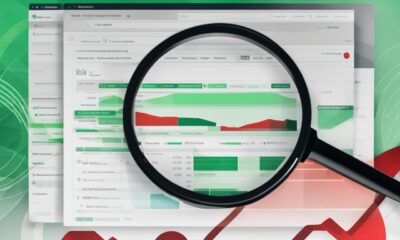
 Keyword Research3 months ago
Keyword Research3 months agoMastering SEO: How to Analyze Keyword Results and Find Easy Keywords
-

 Technical SEO3 months ago
Technical SEO3 months agoUnlock Your Site’s Potential with a Comprehensive Website Audit



















